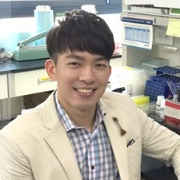Nanomaterials and Nanotechnology for Regenerative Medicine
A special issue of Nanomaterials (ISSN 2079-4991). This special issue belongs to the section "Biology and Medicines".
Deadline for manuscript submissions: closed (31 August 2021) | Viewed by 34960
Special Issue Editor
Interests: bioactive nanomaterials; dental functional biomaterials; cell reprograming; mechanotransduction
Special Issues, Collections and Topics in MDPI journals
Special Issue Information
Dear Colleagues,
Nanosized biomaterials exhibit many interesting features, such as a high surface area and mechanophysical tunability, which possibly mimics the natural extracellular matrix. Thus, nano-biomaterials with diverse functionality can be engineered in various types of architectures, such as nanoparticles, nanofiber, 2D film, porous 3D scaffolds, hydrogels, and their composites from the latest nanotechnology. Nanomaterials and nanotechnology are extremely helpful in accelerating drug/biomolecule delivery ability and myriad cellular response, including proliferation, migration, and differentiation for the repair and regeneration of specific tissues, such as bone, cartilage, nerve, muscle, etc. with great biocompatibility Thus, we invite research, review, or communications papers with a broad range of nanomaterials and nanotechnology for regenerative medicine.
Dr. Junghwan Lee
Guest Editor
Manuscript Submission Information
Manuscripts should be submitted online at www.mdpi.com by registering and logging in to this website. Once you are registered, click here to go to the submission form. Manuscripts can be submitted until the deadline. All submissions that pass pre-check are peer-reviewed. Accepted papers will be published continuously in the journal (as soon as accepted) and will be listed together on the special issue website. Research articles, review articles as well as short communications are invited. For planned papers, a title and short abstract (about 100 words) can be sent to the Editorial Office for announcement on this website.
Submitted manuscripts should not have been published previously, nor be under consideration for publication elsewhere (except conference proceedings papers). All manuscripts are thoroughly refereed through a single-blind peer-review process. A guide for authors and other relevant information for submission of manuscripts is available on the Instructions for Authors page. Nanomaterials is an international peer-reviewed open access semimonthly journal published by MDPI.
Please visit the Instructions for Authors page before submitting a manuscript. The Article Processing Charge (APC) for publication in this open access journal is 2900 CHF (Swiss Francs). Submitted papers should be well formatted and use good English. Authors may use MDPI's English editing service prior to publication or during author revisions.
Keywords
- functional nanoparticles
- biomaterials
- regenerative medicine
- immunomodulation
- mechanotransduction
- preclinical test
- biocompatibility






